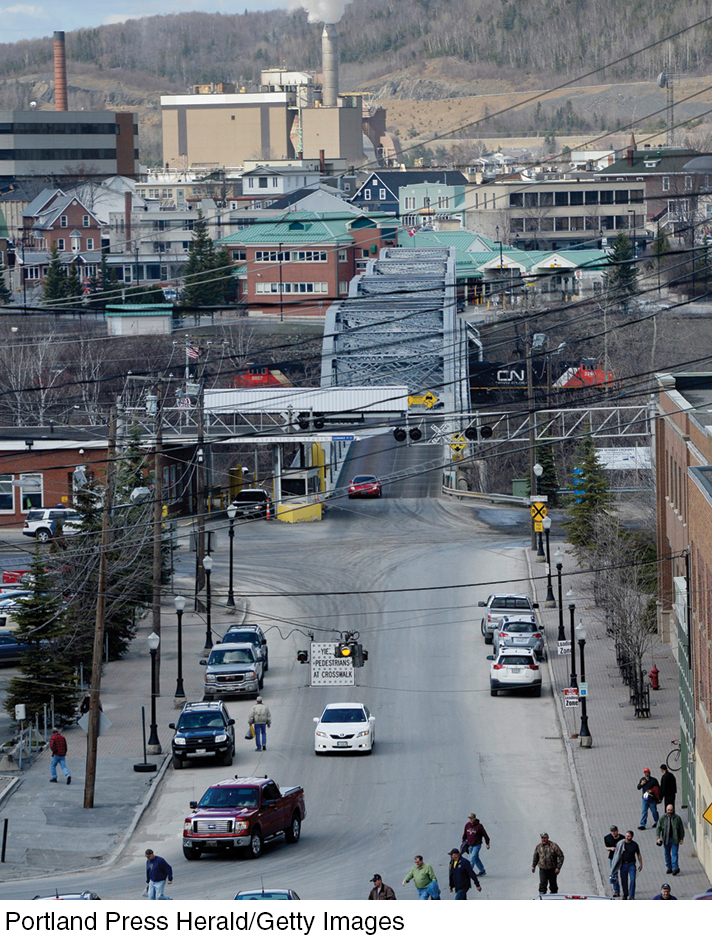501
Aggregate Expenditures
19

502
Learning Objectives
19.1 Name the components of aggregate spending.
19.2 Analyze the relationship between consumption and income using a basic aggregate expenditures graph.
19.3 Analyze consumption and saving using marginal propensity to consume (MPC) and marginal propensity to save (MPS).
19.4 Describe the determinants of consumption, saving, and investment.
19.5 Determine macroeconomic equilibrium in the simple aggregate expenditures model of the private domestic economy.
19.6 Explain the multiplier process, how it is computed, and why it operates in both directions.
19.7 Describe macroeconomic equilibrium in the full aggregate expenditures model when government and the foreign sectors are added.
19.8 Explain why, at equilibrium, injections equal withdrawals in the economy.
19.9 Describe the differences between recessionary and inflationary gaps.
Madawaska, Maine, near the northern end of U.S. 1 that extends all the way south to Key West, Florida, is like many other idyllic small towns in the United States—
During the depth of the 2007–
The economic crisis that Madawaska faced during the last recession was one that many cities, big and small, experienced. As unemployment rose, people had less money to spend on clothing, electronics, travel, and cars, which caused a chain reaction downward in consumption, leading to further unemployment and slow or negative economic growth. This chain reaction is what John Maynard Keynes alluded to when he published The General Theory of Employment, Interest and Money in 1936, which discussed the importance of aggregate spending and the government’s role in stabilizing the macroeconomy.
Today, the U.S. economy (along with the majority of its cities) has recovered from the last recession. As employment opportunities grew during the recovery, more money was earned and subsequently spent, which generated more economic activity and jobs. The chain reaction in recent years has worked in a positive direction. Sometimes, however, consumers and businesses alone cannot pull an economy out of recession, and government policies are needed to speed up growth. But how should government act and to what extent should it act?
These are the more contentious questions that are debated today. Stimulus packages, tax cuts, farm subsidies, laws and regulations, and even financial aid for college students are all part of a huge arsenal of tools available to government policymakers. The goal of government stimulus programs is to put money into the hands (through jobs, tax cuts, and cash benefits) of those most likely to spend it in their communities, thus carrying a positive ripple effect through to other businesses that depend on consumer spending.
But Keynesian policies have not been without their critics as the size of government grew. Spending by government (federal, state, and local) has increased from 10% of GDP in the 1930s to over 30% today as the size and scope of government programs expand. Although many people benefit from these programs, some believe government has overreached and they would prefer something smaller and simpler.
This sort of thinking is not new. In fact, over a century ago, government policies were rarely used to intervene in the workings of the economy, even when the economy entered a downturn. Classical economists, as they are called, viewed the role of the government as providing the necessary framework upon which the market could operate—
The classical perspective was challenged during the Great Depression by Keynes, who turned away from the classical framework with its three separate and distinct competitive markets operating through prices, wages, and interest rates. He focused instead on the economy as a whole and on aggregate spending.
In this chapter, we develop the aggregate expenditures model, which is commonly referred to as the Keynesian model. It can be used to analyze short-